Solana Blink, which converts operations on any chain into shareable links and can be embedded in any social media and website.
Written by: Deep Tide TechFlow
How to describe Solana?
Rebirth in the ruins of FTX, gathering place for golden dogs, cheap and easy to use… These labels close to the assets obviously cannot fully describe Solana's ambition.
It does both chains and mobile phones, and now it even wants to enter social media.
Yesterday, Solana announced another new product (or technology stack) --- Solana Blink, which converts operations on any chain into shareable links and can be embedded in any social media and website.
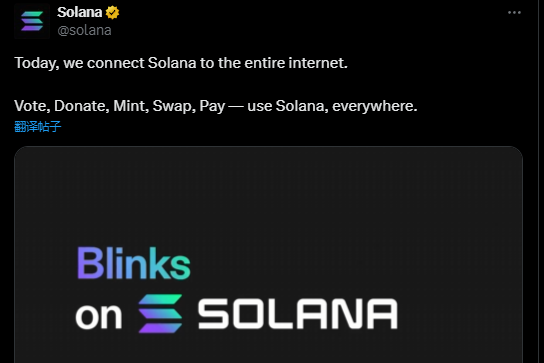
From the name, Blink is actually an abbreviation for Blockchain Links, which refers to the aforementioned shareable links; but abbreviating it as Blink (meaning to blink) is also a pun:
Chain operations, obtained in the blink of an eye.
Just one link embeds chain activities into social media, doesn't it sound a bit like Farcaster?
Similar, but not exactly the same.
Chain activity = one link
From the public content, the biggest difference between Solana's Blink and Farcaster's Warpcast application lies in universal adaptation.
What does universal adaptation mean?
In simple terms, Solana itself won't create a dApp, but only provides a universal capability to link chain activities, which can be placed on platforms such as Twitter, Instagram, or any other website or app, without discrimination.
The official video intuitively demonstrates the user experience of Blink:
- Someone posts a call for donations on Twitter and writes a post with a Blink link
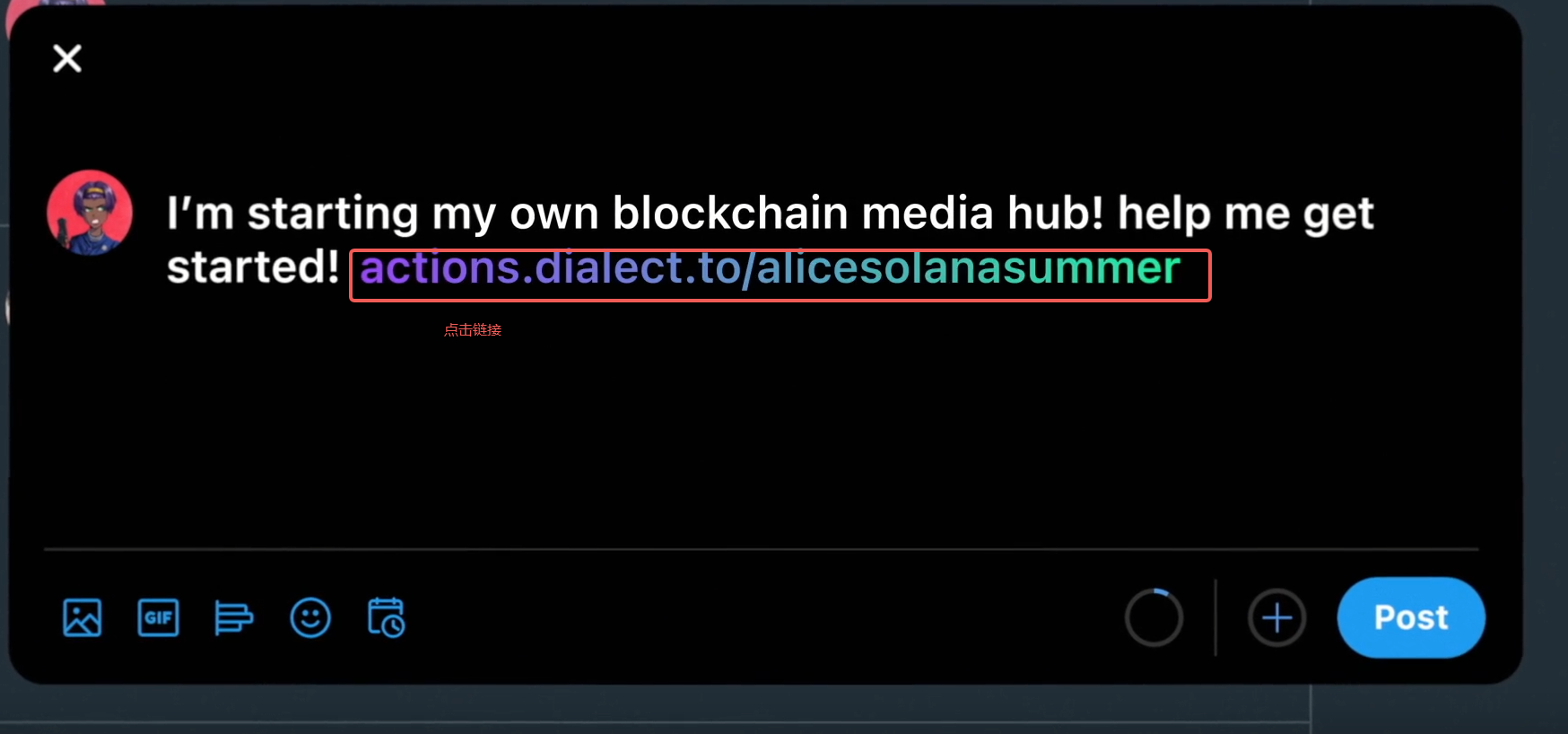
- After others see the post, the link becomes a donation page that you can directly click to donate;
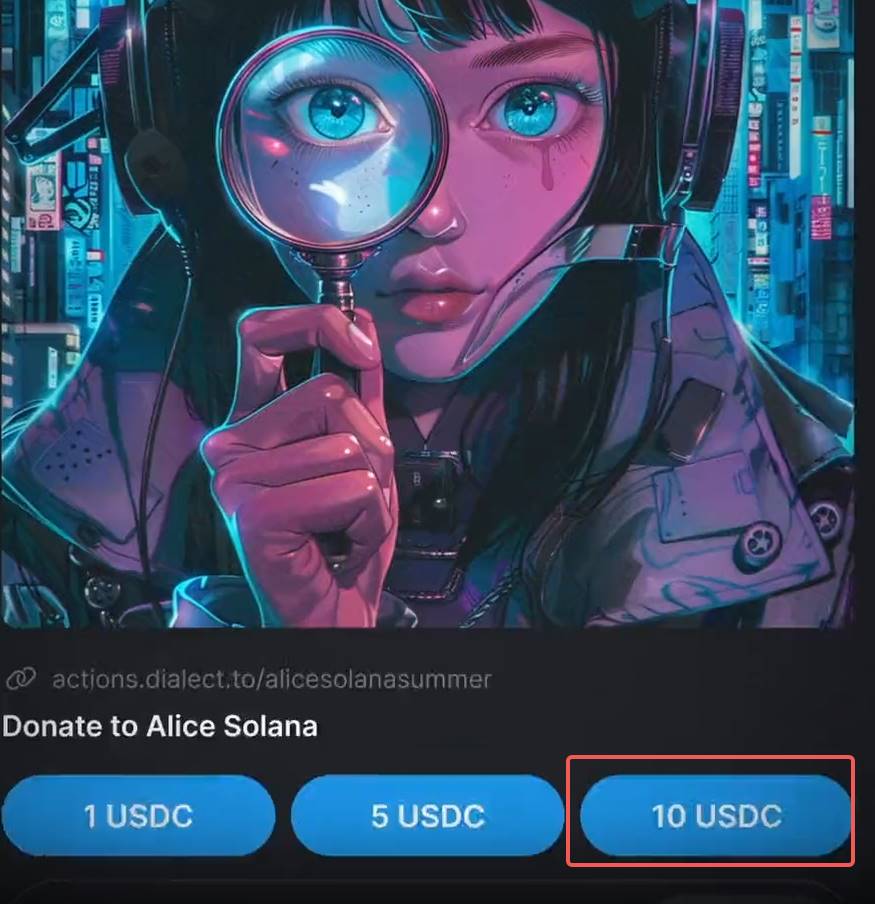
- No need to jump to any DAO, DEX, or other dApp, you can directly click the donation button on the Twitter front end (requires wallet cooperation).
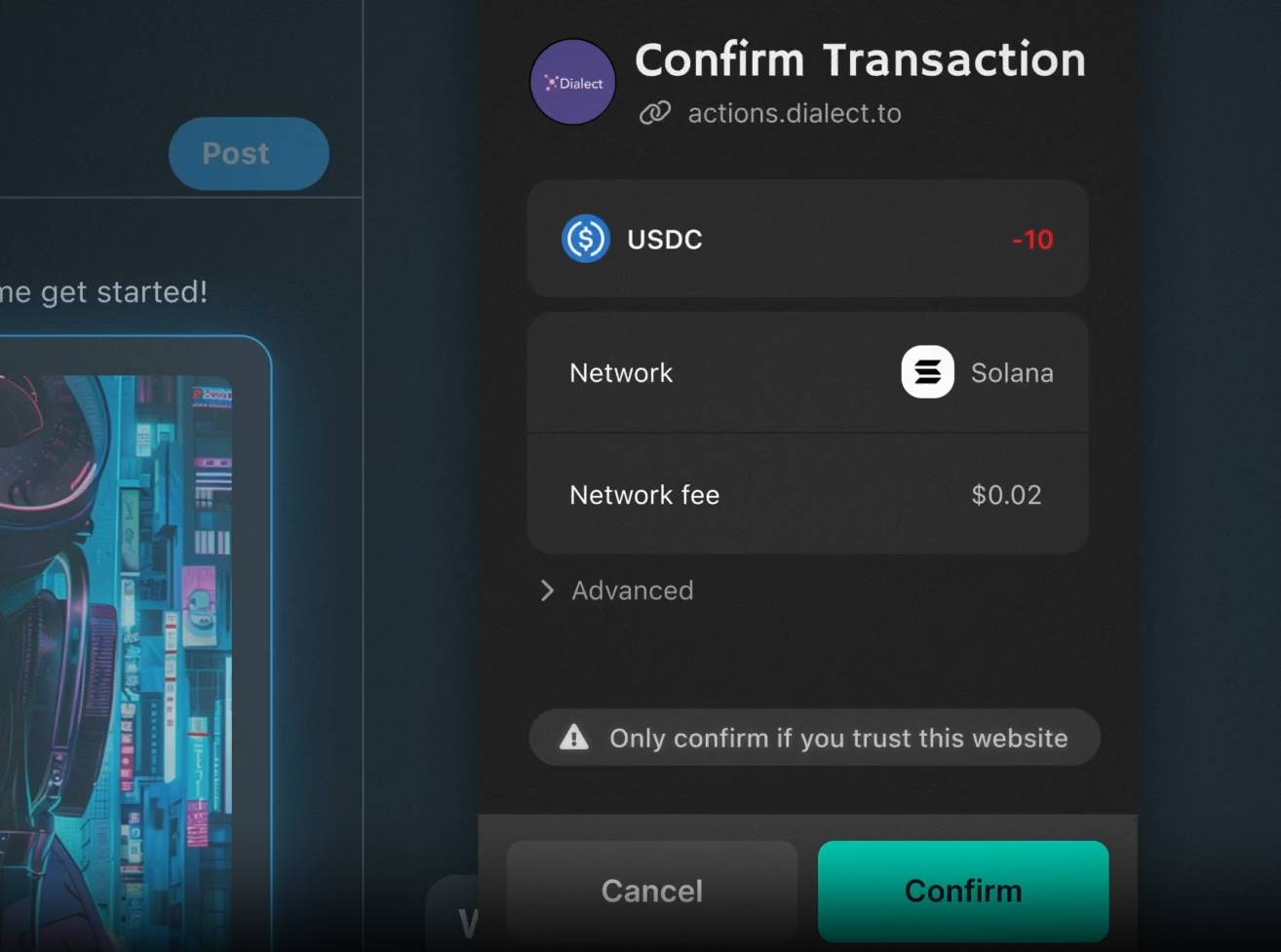
- Donation completed, on-chain transaction takes effect, without needing to pay attention to any details behind the blockchain.
From this example, Blink actually transforms any chain activity into a visible link on the front end. Any user on the front end can click this link, or click the page represented by this link (such as donating, creating NFTs, SWAP, etc.), and complete on-chain operations without jumping.
The underlying logic is encapsulated, leaving only user-friendly page interactions.
The technology stack that supports the implementation of Blink links, officially called Actions by Solana, is an API that allows the construction of transaction messages using complex on-chain business logic, which can be browsed, signed, and sent by the client; and native social media buttons, QR codes, or URLs can all trigger the call of Actions.
Therefore, Blink is actually a type of URL, which means that there is not just one way to call Solana to implement various on-chain operations, and there is more room for imagination in the future.
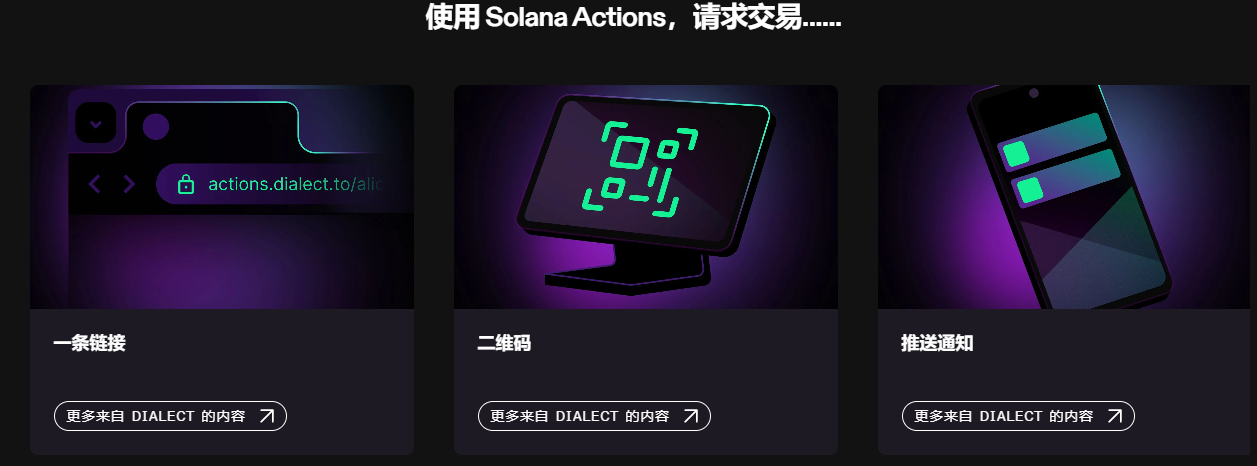
Of course, Solana alone may not be able to accomplish this.
The technology for Actions and Blink was completed through a collaboration between Solana and Dialect (@saydialect), and the aforementioned voting, NFT purchases, and SWAPs may require functionality provided by Solana's own ecosystem projects.
For example, donations could use Sphere, NFT purchases could use Tensor, and currency exchanges could use Jupiter, and so on. In other words, the capabilities are still provided by the ecosystem projects, but the presentation can be directly completed on social media.
You don't need to worry about who provides the technology behind the scenes, as everything is encapsulated as much as possible.
Is the end of going mainstream all about socialization?
Returning to the question at the beginning of this article, is this similar to Warpcaster?
In fact, from the results, they do indeed converge on the same path, embedding on-chain operations in social media with one click, leaving the complexity to themselves and simplicity to the users.
However, if you take a moment to consider the recent trends in the cryptocurrency industry, you will find that everyone wants to go mainstream, or make going mainstream itself a point of FOMO, and they are all moving towards socialization.
It's just that each has its own endowments and paths to implementation.
Farcaster is self-sufficient, creating the decentralized social media platform Warpcaster for you to use, and using the FRAME framework to embed various on-chain operations, allowing you to see and do without jumping on Warpcaster;
TON is leveraging its strength, with Telegram itself being a mature and associated social media powerhouse for you to use, with built-in mini-programs allowing for a variety of small games, plus an integrated TON wallet enhancing the experience;
Compared to these, Solana is more like making connections, not creating its own social media and not having its own social media, but providing another elegant way to parasitize --- I can embed through Blink on any popular, mainstream, and commonly used social media; I don't care about traffic, I just use the existing massive traffic.
In comparison, Twitter is more mainstream, and encrypted Twitter posts already have their own audience and circles, so choosing to focus here is also a competitive advantage.

However, it's probably impossible to say who will come out on top, as each has its own strengths and audience; but one thing is for sure:
Everyone is thinking similarly, and at the end of going mainstream, there is definitely no lack of socialization support.
In the current poor state of the cryptocurrency experience, expanding new colonies to attract more users is a necessary step.
Smart as you are, whose spaceship will you board?
Join the official Deep Tide TechFlow community
Telegram subscription group:
Official Twitter account:
English Twitter account:
免责声明:本文章仅代表作者个人观点,不代表本平台的立场和观点。本文章仅供信息分享,不构成对任何人的任何投资建议。用户与作者之间的任何争议,与本平台无关。如网页中刊载的文章或图片涉及侵权,请提供相关的权利证明和身份证明发送邮件到support@aicoin.com,本平台相关工作人员将会进行核查。




